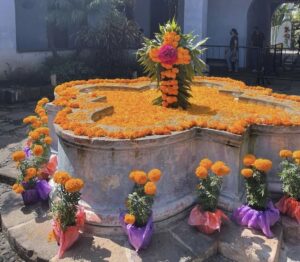
González, H. (2021) Decoraciones de flor de cempasúchil para el dia de muertos, Jardin Botan, Cuernavaca, México.
by Regina Munoz Rangel
El Día de Muertos, or Day of the Dead, is a commemoration of the death of our loved ones. Throughout my childhood, I used the holiday to get to know my grandfather better, to get to know what he looked like throughout his life, what he enjoyed eating, and about his experiences, initiatives, character, his humor, all the reasons for which I sign with his last name. The name of the celebration indicates that there is a single date, but actually there are multiple. On November 1st, deceased children are remembered, a sad and often overlooked date due to the pain it causes. I believe that we evade this day, because it opposes the notion of children outliving their parents in the circle of life, something our parents often remind us of. On November 2nd, our ancestors are commemorated on a much happier note as it is a celebration of the lives they lived, a remembrance of what made their lives meaningful.
The origin of El Día de Muertos is multicultural. In Europe, All Saint’s Day on November 1st is a remnant of the Christian religion that recognizes all the Saints who reached Heaven. In 11th-century France, the Abbot of Cluny promoted this celebration in recognition of the Maccabees. Later, the Roman Catholic Church adopted this date and endorsed its celebration. On the other side of the pond, in Mesoamerica, the Nahua culture celebrated Miccailhuitontli, a festivity for the dead around August, which was later observed by evangelisers to be a celebration of the circle of life. The merging of the Spanish and the Indigenous cultures of Mesoamerica, specifically of Mexico, gave rise to “el Dia de Muertos.”
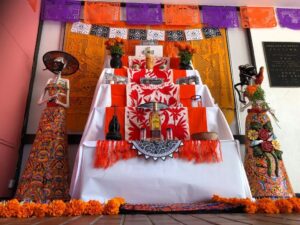
Día de Muertos, Canal Japón, 2020. https://diplomaciacultural.mx/canal/japon/altar-de-dia-de-muertos/
In a highly diverse country, customs and traditions are very different, but the element that prevails throughout Mexico is “el altar.” It is the piece around which the celebrations take place. These vary in shapes and sizes, and the symbolism of its original, pre-Hispanic, pyramid-like shape has washed out over the decades, yet its purpose remains: to receive the souls of our loved ones when they come to visit us. The levels were meant to symbolise the pre-Hispanic beliefs of the underworld, the physical world and the sky. On the altars we put their favorite foods, drinks, and things they loved, such as mezcal, tequila, a cigarette, their favourite guilty pleasures like tamales, mole, pan de muerto, etc. We offer them the little things that made their lives worth living.
Some customs are completely different at one end of the country compared to another. I remember a friend from Nuevo Leon, a northern state, was telling us at lunch time that in the altar of her home she put mirrors so that her grandparents can see themselves in their spirit form. Suddenly, our south-mexican history teacher interrupted us and said, “Wait, what?! Why?! They will be trapped in the mirrors!”
This tradition and the culture around the Day of the Dead is central to our Mexican identity, as a lively, creative, and spiritual people.
Individually it allows people to connect with their deceased loved ones, as well as parts of themselves and their own story. It helps construct a personal identity, from the simple things such as learning that you like crafting and decorating while putting up the altar at home, to much more personal ones such as understanding that a certain person was truly important and you still have to process their death. On a familial level, it helps to share time together while setting up the altar, telling stories of our ancestors and the different relationships each had with a particular person, it helps us reflect that all people are and have been valuable and remarkable.
Culturally, it keeps traditions alive, as they continue to evolve and be shaped by historical events such as the pandemic, which has filled our altars with more portraits these past few years. The altar gives us the opportunity to keep our loved ones close by adopting some of their traditions, like hosting the monthly family grills my grandfather loved. This holiday teaches us about our family history and passes on cultural practices from generation to generation. It allows us to be empathic, to exercise the Mexican solidarity that characterises us in joyous moments. It is also a vivid reminder of the importance of celebrating death, not fearing it, and viewing it as part of life. Whether we believe in an afterlife or reincarnation, death is not something to fear, it is simply a natural aspect of human existence.
Other posts that may interest you:
Discover more from The Sundial Press
Subscribe to get the latest posts sent to your email.


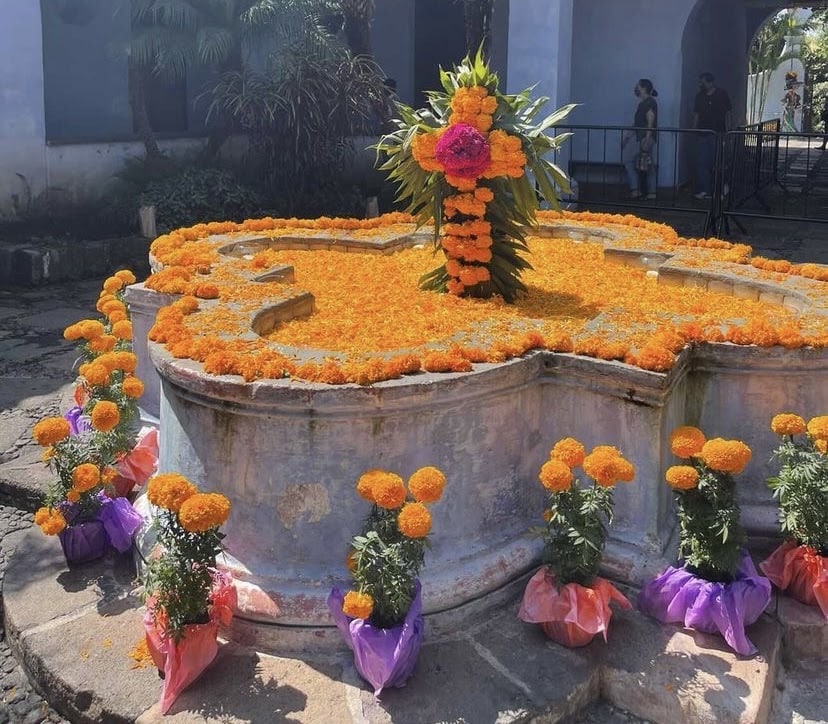
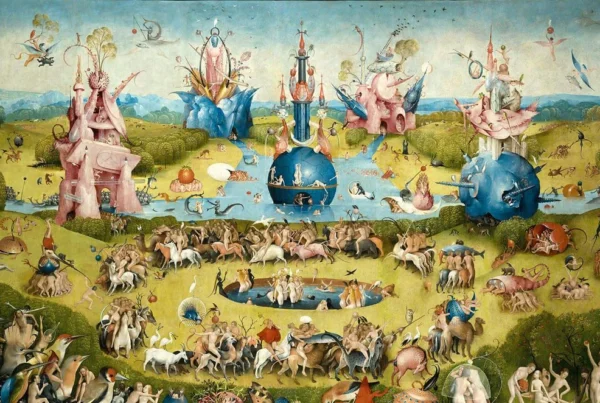

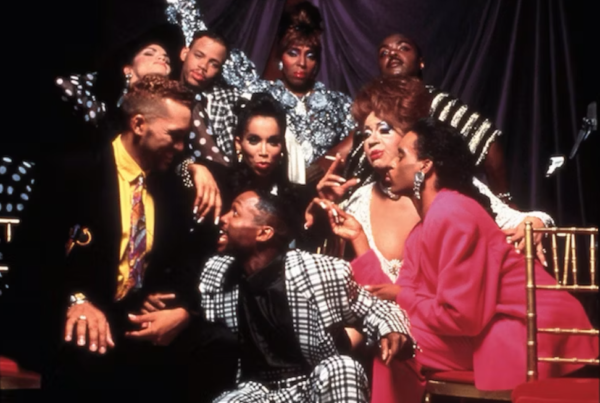
Animo Regiss!! Viva Mexico!!
I’m so proud of you 🙂
A really interesting article as it gives more information but also personal experiences to a celebration we hear from in Spanish class…
Having a specific celebration to remember and talk about our lost ones is so important. In my opinion, it is lacking in France!
Thanks for sharing 🤗